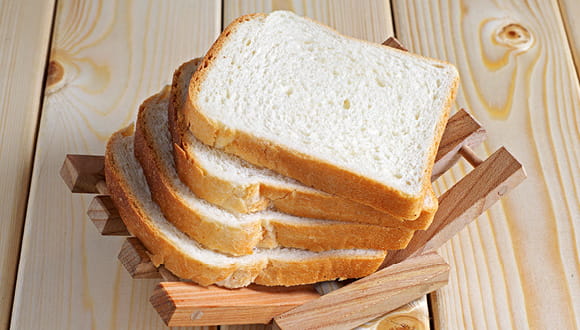The answer is equal parts "yes" and "not necessarily."
It turns out grandma wasn't steering you in the wrong direction when she made you eat the bread crust of your peanut butter and jelly sandwiches all those years. While bread crust can be healthy, the reason why may be different from what you heard growing up.
The browner, the better?
We tend to automatically associate brown-colored foods with having more nutritional value. But, when it comes to bread, the crust's color is a result of being exposed to the oven's heat for a longer period of time. That's it — unless otherwise stated on the packaging. Yet bread crust does offer some important health benefits: namely, dietary fiber and an antioxidant called pronyl-lysine.
The chemistry of crust
Pronyl-lysine is a cancer-fighting compound created during a chemical reaction that takes place while baking. This phenomenon was discovered in a 2002 German study known as the Maillard Reaction. According to the International Journal of Food Science, "when foods are being processed or cooked at high temperature, chemical reaction between amino acids and reducing sugars leads to the formation of Maillard reaction products (MRPs)."
During this reaction, not only is the bread's flavor and aroma created, but "both beneficial and toxic" compounds can be released. However, just as easily as this disease-fighting antioxidant is created, it can be destroyed. Like most foods, when bread is overcooked, burned, or hyperprocessed, it can be potentially harmful (due to the formation of carcinogen-related properties) or have barely-there health benefits.
A not-so-crusty conclusion
On the contrary, if you're looking to get the nutrition you were hoping to find in bread crust, you can always try traditional bread alternatives or, even better, nutrient-rich foods:
Bread
- Gluten-free bread (if you must eat it)
- Protein-packed bread (dense and…well, dense)
- Sprouted grain bread (not too bad, a little dry)
- Or, even, cauliflower-based bread (no comment)
Not bread
- Flaxseed, wheat germ, apples and bran for fiber
- Fruit for healthy carbohydrates
- Oatmeal for whole grains
If you're dead set on getting your pronyl-lysine fix from bread, you'll find more of this antioxidant in "darker breads like wheat and pumpernickel…than lighter breads like white," advises Science Daily and The American Chemical Society.


